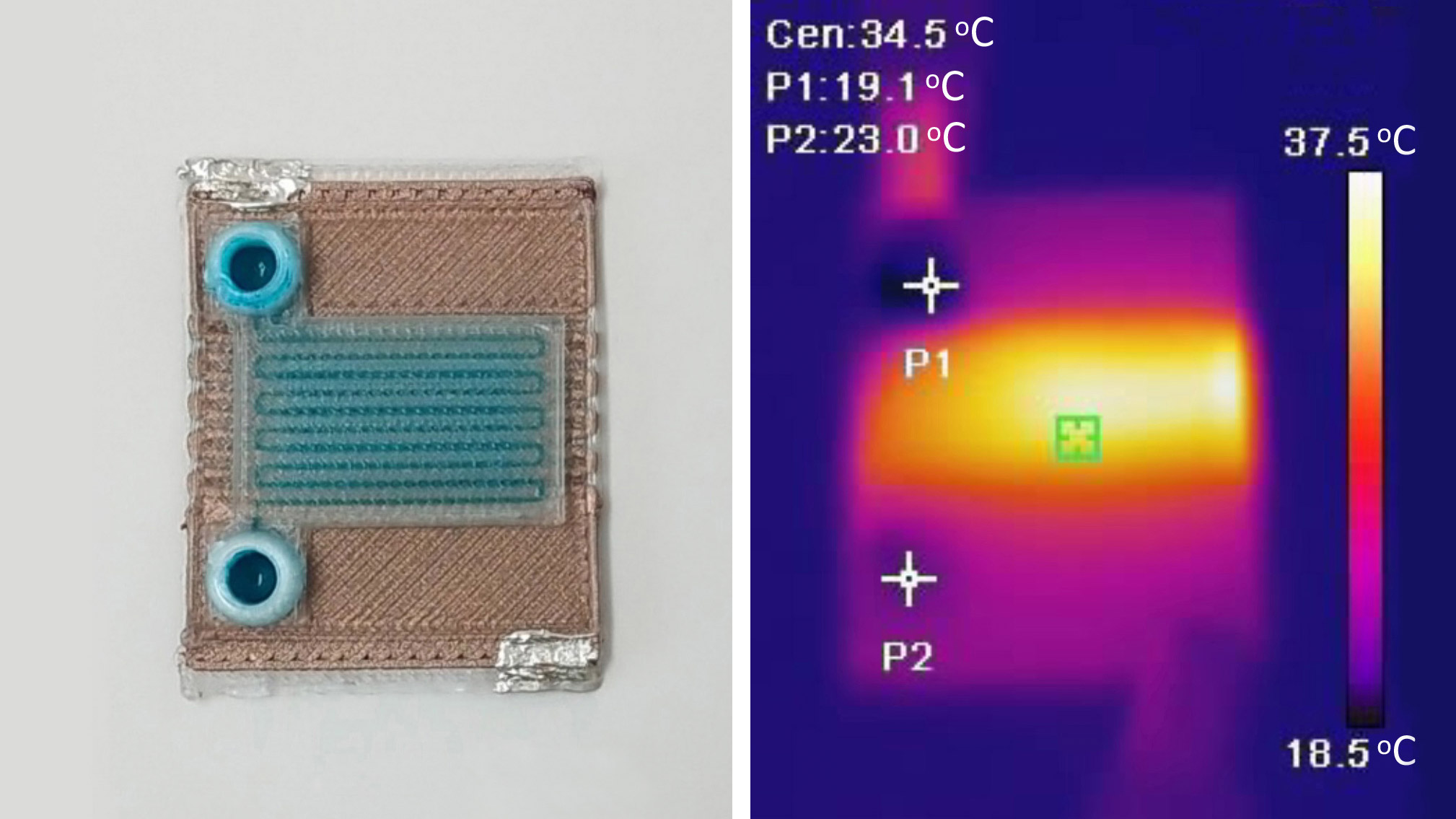Self-heating microfluidics from a 3D printer
A cheap one-step process produces miniature chemical reactors that could be used to detect diseases or analyze substances.

MIT researchers have used 3D printing to produce self-heating microfluidic devices, demonstrating a technique that could someday be used to rapidly create cheap, accurate tools to detect a host of diseases in tiny samples of blood or other fluids.
Today, many microfluidic applications require chemical reactions that must be performed at specific temperatures, necessitating complex devices outfitted with heating elements of gold or platinum. These devices are typically manufactured in a clean room, using an expensive fabrication process that is difficult to scale up.
Instead, the MIT team used a 3D printer that extrudes a biodegradable polymer known as polylactic acid (PLA) along with a modified PLA that has copper nanoparticles mixed in, which converts it into an electrical conductor. When electrical current is fed into a resistor composed of this copper-doped PLA, energy is dissipated as heat.
The entire device can be produced in one step, in a process that uses about $2 of materials. And the technique is customizable, so an engineer could create a device that heats fluid to a certain temperature or in specific patterns. (More work needs to be done to control the temperature precisely and to make devices that can be heated above 50 °C, when the doped PLA begins to degrade.)
The process could be especially useful in countries where clinicians may not have access to the expensive lab equipment required for many diagnostic procedures.
“Clean rooms in particular, where you would usually make these devices, are incredibly expensive to build and to run,” says Luis Fernando Velásquez-García, a principal scientist in MIT’s Microsystems Technology Laboratories and senior author of a paper describing the technique. “This is really a way to democratize this technology.”
Keep Reading
Most Popular
Large language models can do jaw-dropping things. But nobody knows exactly why.
And that's a problem. Figuring it out is one of the biggest scientific puzzles of our time and a crucial step towards controlling more powerful future models.
How scientists traced a mysterious covid case back to six toilets
When wastewater surveillance turns into a hunt for a single infected individual, the ethics get tricky.
The problem with plug-in hybrids? Their drivers.
Plug-in hybrids are often sold as a transition to EVs, but new data from Europe shows we’re still underestimating the emissions they produce.
Stay connected
Get the latest updates from
MIT Technology Review
Discover special offers, top stories, upcoming events, and more.